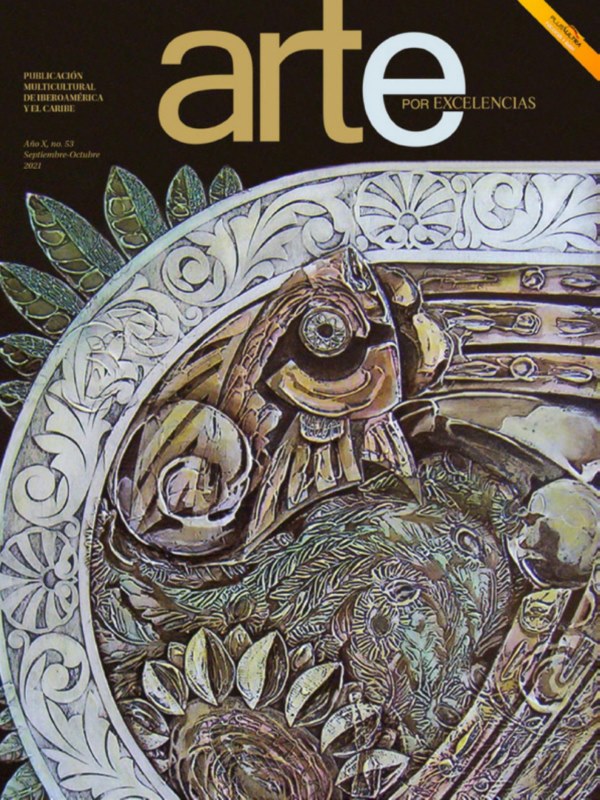Many a work has been written and published about the Cuban art of recent years, so many that it seems as if the great boom that our artistic creation enjoyed all throughout the 1990s were still alive and kicking. Nonetheless, after the effervescence ebbed away and the thrill of the Cuban art died down in all major international artistic circles, it appears so curious –better yet welcome- to see in Cuba quite an increase in the publication of researches, studies and critical approaches on this issue. Here comes now Holy Water: Review of Cuban A rt (1987- 2007) by Rufo Caballero, an author with a dozen books written over the past 15 years, a college professor and one of the most recognized critics on the turf and overseas in topics that range from the visual arts to films and contemporary culture in the broadest sense of the word. Thinking of art is the heart of the matter in this book, a compilation of essays published –all of them but three have been put out– in specialized magazines, plus a number of major awards and prizes they have grabbed in literary contests. The reflection about works, artists, exhibits, events and moments of the Cuban art embraces a wide spectrum that goes from the 20th-century avant-garde maestros to the youngest artists that now stand out in the island nation’s cultural life. Clustered in four thematic blocks that contain historiographic issues, poetic interpretations, accurate reviews and post-critical sets, the texts all go by suggestive titles that lay bare the author’s quality as an excellent title-maker –quite a scarce commodity in the national literary guild. Among the basic keys that sustain this humongous critical volume of over 400 pages, there’s one that strikes anybody’s attention from the first to the last essay: the elegance of a language whose inspiration and gracefulness result in the most exquisite prose of Cuba’s literary tradition. The book is free of historic loose ends, senseless attributive usage and the recurrent mania of flaunting the vast culture and education of the writer at the expense of his or her own judgments –problems that affect heavily a considerable chunk of the local critics, especially the fledgling writers. Caballero wields wittily the codes of essays as artistic literary prose per se, combining the cultivated language with the colloquial expressions, hooking up the theoretical knowledge with the most genuine Cuban slang, bridging the speculative imagination with information derived from a scholastic formation. The result is a strategic art of writing that does pay off and reaches its pinnacle by the hand of strength and slenderness. In one of his previous books, the author owned up the credo that nourishes this form of essay-writing. According to his confessions, he disbelieves objectivity –though it might seem otherwise- because it looks false and naïve. “Only in the way I take on my own subjectivity, as long as I’m sincere in each and every word, then I could perhaps be objective.” Rufo Caballero blandishes the ductile hybridity of the essay in which arguments and metaphors stand in the same breath, and so do post-critical exercises as the inspired prose –in the densest tradition of the genre- breathes some Orteguian life into it, so consubstantial in the region’s literature. He writes from the seeds of certainty he has been sowing for years during the tryout of his critique tools, one of which has to do with his own challenge in representing art exegesis and the need to put across his ideas with passion and articulateness. As he acknowledges that “fertile, juicy speculation is one of the least alienating tasks of review,” he’s taking us to just another certainty –this one from Borges- that above all, critics have to be good essayists. The other basic key I’d like to highlight –complementary to the abovementioned one- is the huge appetite for knowledge he boasts, a desire that allows for geometric multiplication of his wisdom about the Cuban art and the arts in general. Thus, he creates breathtaking analogies, crosses referent boundaries, introduces wise and timely quotations, makes use of a rich combination of different conjugations and builds a true delight for the reader, the architecture of reasoning to make good on hypotheses and theoretical premises. If we pay heed to professors Lazara Menendez –author of the book’s substantial forewords- and Maria de los Angeles Pereira, responsible for the far-reaching and expressive back cover notes, the book deals with timely artistic review by a creator in which, in this particular case, the critic’s interpretation reaches high-pitch notes. I’d say it’s all about the skills and depth of the fresh view getting trained time and again in the appraisal of an artwork’s virtues and shortcomings, of a particular poetry. It’s worth mentioning at this point something equally significant about the book and the author’s style: his self-assurance and spontaneity, his pluckiness and honesty in getting involved in the risk and taking the genuine chances of a profession in which the well-known “theory of hitting the nail on the head,” that is, everything’s okay as long as you don’t come messing around with me, not even with the kindest words from your lips, is always out there. The depth of knowledge and the authority this wisdom provides come in extremely handy for this book’s author to get the job done. Through his eyes, the book features a parade of some of our most outstanding artists, from the avant-gardes of the 20th century to today’s young guns: Carlos Enriquez, Marcelo Pogolotti, Mariano Rodriguez, Raul Martinez, Antonia Eiriz, Servando Cabrera Moreno, Nelson Dominguez, Pepe Franco, Moises Finale, Rocio Garcia, Juan Roberto Diago, Jose Toirac, Franklin Alvarez, Agustin Bejarano, Ruben Rodriguez, Reineiro Tamayo, Cutty, Kadir Lopez, Aisar Jalil and, quite particularly, Arturo Montoto, targeted in four of his texts. Other essays touch on certain moments and stages of the arts, as well as topics on the country’s cultural sociology. Eyed as a whole, this archipelago of texts –as put by Dr. Lazara Menendez- comes up as a multidisciplinary critical code on Cuban art and in which, fortunately, the academic criteria gave way to enlightenment and the sparkle of good art reading. In this selection, the ancestry of finesse shows, and I’ll even dare say something virtually nobody accepts: liking and good taste do not hinge on will, at least not completely. In it –either as an integrator or an influencer- the readings and the shades of the information as they whip thought preferences into shape –the sensuality of the whole thing- come together as one. I won’t fall into the temptation of mentioning those texts that lured more than others. This compilation shows off a balance of qualities, and each essay longs for the same interrelation with the reader on equal footing. As readers may find out during their trip through the pages of Holy Water, this book blends the substantial academic insight –something art students will definitely appreciate- with a variety of approaches: semiological, epistemological, anthropology, cultural studies and, last but not least, esthetical. Armed with the method of the hammering pun –as Cuban writer Alberto Garrandes would have said- the essayist’s judgments pierce into both the art matter and the socio-historic context where that art thrives. Such analyses are stripped of the stiffness or predispositions of side-taking and partiality; they come down from intelligence, and that prevents us from resorting to the kind of fetishism and gullibility political judgments or the sociology of culture usually fall pray of. The contextual and artistic assessments emerge as the outcomes of painstaking research and an assortment of sources that make room for the mature, autonomous praising of the author. The assertion that language is thoughts, let alone a resourceful spring of symbols, is easily appreciated in Rufo Caballero’s prose. The author hones the phrase, studies the linkages of images, extols the words he’s about to use, never sacrifices form and leaves the essence of his speech intact. In his most recent books and in this volume in particular –despite its being a compilation that culls works from over a decade of good writing- the author’s construction of a language style is clearly seen. There’s rationality galore in this graceful prose and plenty of sensuality in the structure of the ideas. Rufo shows his masteryof a language that’s still unfinished, precisely and solely thanks to his persistence in subjectingit to nonstop renovation and the strain of perfectionism. I harbor no doubts whatsoever that Holy Water will enter the scene of the Cuban book with flying colors, or as Dr. Maria de los Angeles Pereira writes, “it’ll be a major publishing development.” I can say more; I bode recognition, a reading with gusto, upcoming prizes and, of course, the biggest prize of all: the polemics it will earn among critics. Better yet, I’m confident it will bring about new ways to interpret art reviews in the country. On the long road of learning and unlearning the Cuban art is paved with since it’s been under the microscope of scholars and critics, a book like this is fundamental to contribute to its unsung history. I cherish the innermost satisfaction of having read this book with the conviction that Holy Water stands for a major contribution to the national essay and all at once to the gestation of a thought about Cuban visual arts that continues to grow, yet it requires endeavors from intellectuals of that caliber. Havana, October 2008 Rafael Acosta de Arriba (Cuba) Researcher and essayist racosta428@yahoo.com

Publicaciones relacionadas

Un tejido expositivo con genuinos imaginarios
Diciembre 19, 2024
Geo Ripley: De la sombra a la luz
Diciembre 11, 2024













